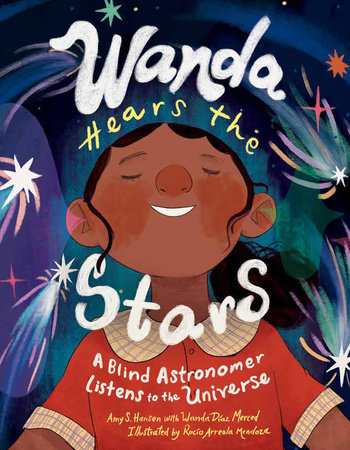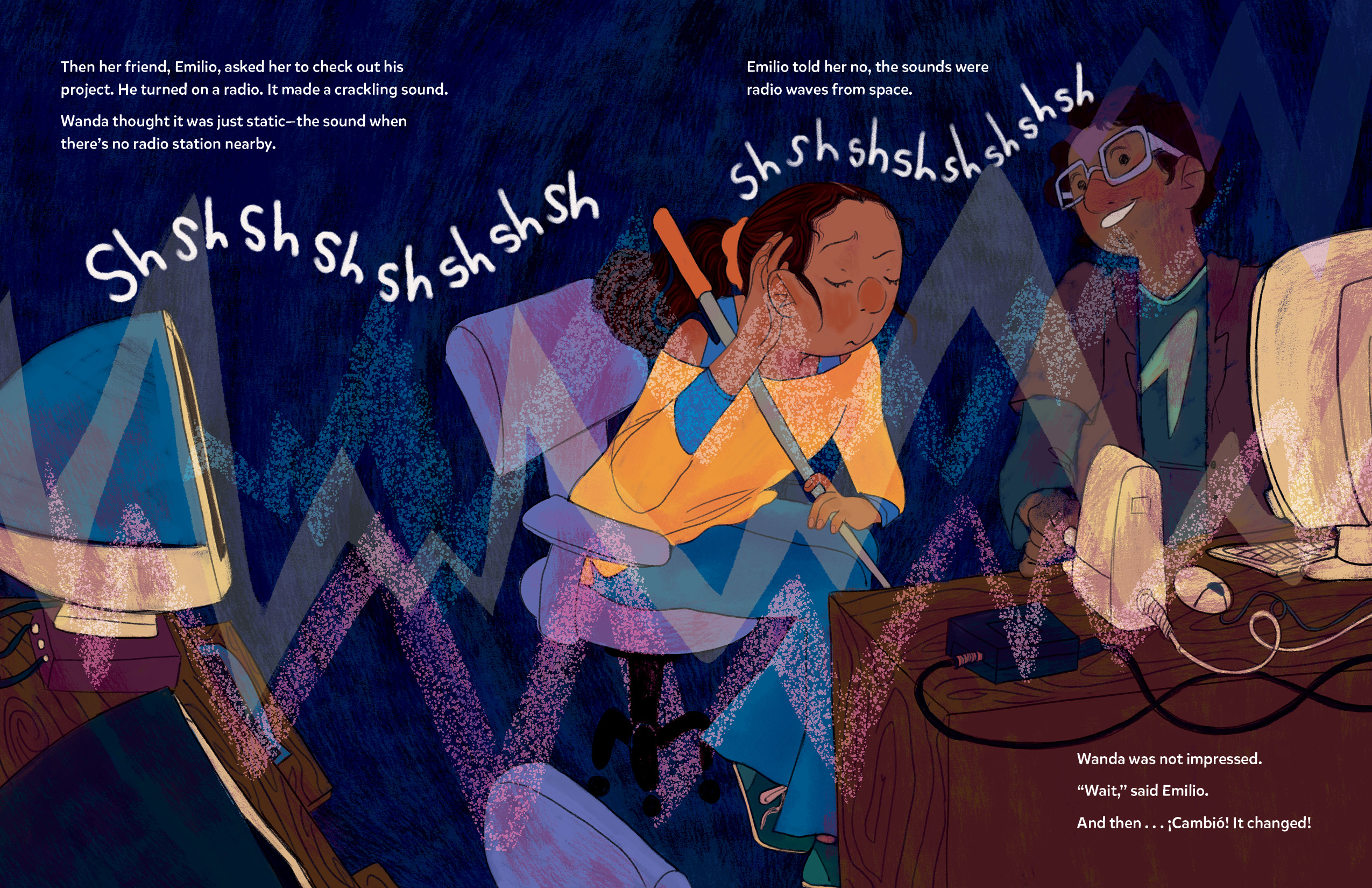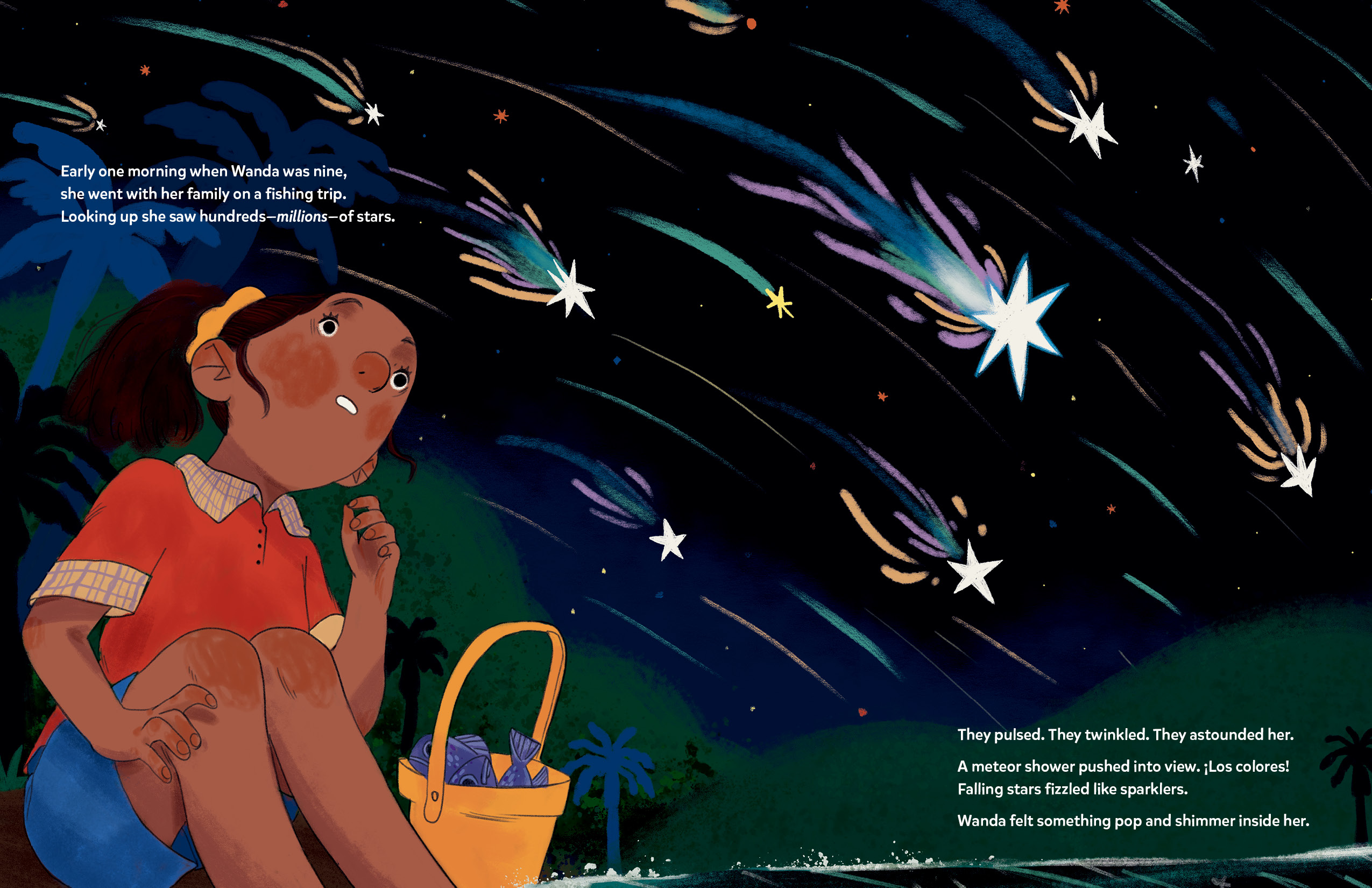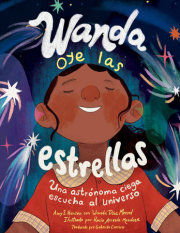♦ This picture book biography with STEM connections and disability representation shares the fascinating story of astronomer Wanda Díaz Merced. Growing up in Puerto Rico, Díaz Merced was fascinated by the stars and chased her dream to study them all the way to college. But when she began losing her eyesight due to diabetes, she had to find a new way to see what she had dedicated her whole life to. Not one to give up when faced with a challenge, Díaz Merced threw herself into the field of sonification, where numerical astronomic datasets are turned into sound, revealing new insights into celestial activity. Mendoza’s whimsical illustrations amplify the themes of magic and discovery surrounding Díaz Merced’s work. Thorough back matter is available in both the English and Spanish versions, including notes from both authors, information about the scientific concepts discussed, a time line of Díaz Merced’s career, and sources for further reading. VERDICT Readers will walk away inspired by the world around them and Díaz Merced’s creativity and determination. Recommended for all libraries.
—School Library Journal, starred review
♦ This picture-book biography traces the struggle and triumph of a little girl who kept searching until she found a new path to viewing the stars. Today, Merced is a world-renowned astrophysicist and advocate for inclusivity in science, but as a child, she never saw stars at all, as the rain-forest canopy in Puerto Rico, where she grew up, obscured her view. When Merced was nine, on a fishing trip with her father, she saw stars for the first time, as well as a meteor shower. This was the revelation—brilliantly conveyed by Mendoza through pointy stars and streams of color—that transformed Merced’s life, leading her to study physics. After Merced lost her sight as a college student, she learned that she could access the stars by tuning into radio waves in space, allowing her to hear what she couldn’t see, part of the process of sonification, explained clearly and compellingly in the text. The digital illustrations, with their startling images of light and dark, enhance the theme. “A Note from Wanda” at book’s end includes her rallying cry, “Science is for everyone!”
—Booklist, starred review
Astronomer and co-author Díaz Merced explains how, after going blind, she used sound to make a groundbreaking discovery.
In Gurabo, Wanda’s Puerto Rican hometown, the rainforest hid the stars. So when 9-year-old Wanda witnessed a meteor shower, she “lit up with wonder.” Her curiosity persisted; in college, Wanda studied physics and “aimed for the stars.” But in Wanda’s third year, she went blind as a result of diabetes, and “the stars had dimmed, too. How could she study what she couldn’t see?” Fortunately, a friend introduced Wanda to radio waves that recorded sounds from space, and “she heard a path to the sky.” At NASA, Wanda used sonification—the conversion of visual data into sounds—to study the stars. Still, she worried about keeping up with her colleagues. Through sonification, however, Wanda discovered oscillations in a star’s energy, something nobody else had noticed—confirming that “using sound didn’t mean she had less information. It just meant she had to work differently.” The onomatopoeia-adorned text includes Spanish dialogue and concludes with a rousing invitation: “Look up! ¡Mira arriba! The stars belong to everyone!” Arreola Mendoza’s vibrant cartoon illustrations, with dark, jewel-toned hues evoking the night sky, convey Wanda’s fascination and determination and the beauty of space. Extensive backmatter provides further details about sonification and Díaz Merced’s adaptation to blindness. Most figures, including Wanda, have brown skin.
Uplifting and informative.
—Kirkus Reviews











